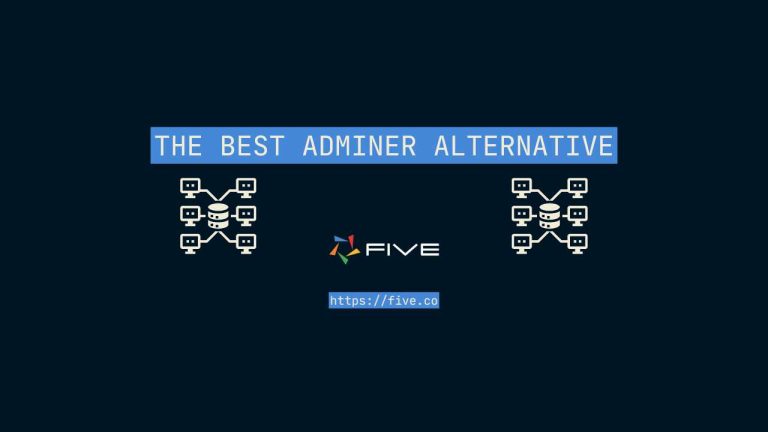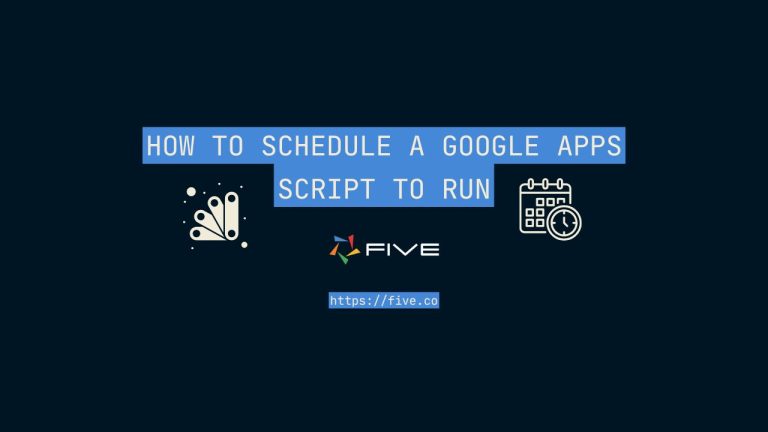Create a Volunteer Database In 3 Steps
A Quick & Easy Guide on How to Create a Volunteer Database
Managing volunteer records, tracking participation, and organizing volunteer-related tasks can be challenging without a structured system in place.
This is where a volunteer database comes in handy. Whether you’re part of a nonprofit organization, community group, or charity, having a robust volunteer database can make things easier.
A volunteer database stores essential information about volunteers, including personal details, participation history, skills, and availability.
Let’s dive in and learn how to create a volunteer database that suits your organization’s needs.
Why Build a Volunteer Database?
A well-organized volunteer database is essential for managing volunteer operations. It helps you:
- Track volunteer participation and availability: Know who your volunteers are, what events they’ve participated in, and their availability for upcoming opportunities.
- Manage skills and assignments: Keep track of volunteer skills, match them to tasks that suit their expertise, and ensure smooth event coordination.
- Handle communication: Efficiently manage communication with volunteers, keeping them informed about upcoming opportunities, changes, and updates.
- Monitor compliance and reporting: Track volunteer hours, certifications, and any regulatory compliance (e.g., background checks), while also generating reports for grant funding or internal review.
Having all your volunteer information in one place ensures that your team is on the same page, allowing for more efficient management of your volunteers and enhancing their experience with your organization.
What Is a Volunteer Database?
A volunteer database stores detailed information about your volunteers and their participation, including names, contact information, availability, skills, and activity records. It also tracks volunteer schedules, hours worked, and compliance with any necessary regulations.
Depending on your organization’s needs, you might also track attributes like emergency contact information, special certifications, and availability for specific events or tasks. Additionally, you can monitor volunteer engagement, performance, and any specific compliance requirements (e.g., “completed background check,” “signed volunteer waiver”).
Let’s say you’re managing a nonprofit. Your main system might handle basic tasks, like tracking volunteer sign-ups and event assignments. But it might not be great at keeping track of all the finer details, such as volunteer skills, hours contributed, or compliance with regulations.
That’s where a proper volunteer database comes in handy. It’s like a one-stop shop for everything about your volunteers and organizational processes.
You can search it easily, and it keeps all the important info in one place. This makes it much easier to manage your volunteers and ensure the smooth operation of your events.
Why Spreadsheets Fall Short for Volunteer Databases
Many organizations start out tracking their volunteer information in Excel or Google Sheets. It seems easy at first, especially when your volunteer team is small. But as your organization grows, these spreadsheets can cause some real headaches:
- Version Chaos: Before you know it, everyone’s got their own copy. You end up with a mess of files like “VolunteerList_LATEST,” “VolunteerHours_Updated,” “OldVolunteerData_Ignore,” and so on. Who knows which one’s right?
- No Clear History: Without a proper system, it’s hard to keep track of who changed what and when. If the person in charge of updates leaves, you might be left wondering why certain changes were made.
- Data Gets Messy: People start adding their own notes, highlighting things, and making manual tweaks. Soon enough, you’ve got a rainbow of colors and comments that don’t make sense to anyone else. For example, someone might mark a volunteer as “available” in one file, but others might miss it or misunderstand.
Using spreadsheets for your volunteer data goes against the whole point of having one trustworthy source of information. Instead of smoothly managing your volunteers and their activities, you end up playing detective with conflicting spreadsheets.
Building a Proper Volunteer Database
Building a real volunteer database with a proper tool can solve these problems. It gives you one central place for all your volunteer information that everyone can rely on. This ensures smoother operations, better volunteer management, and a more efficient organization.
How to Create a Volunteer Database in 3 Steps

Let’s be real—if you’re managing volunteers, you probably don’t have time to become a database expert. Normally, you’d need to fully understand concepts like SQL and how to build user interfaces. That’s a lot to ask when you’re busy coordinating volunteers, planning events, and ensuring everything runs smoothly.
This is why many organizations put off creating a proper volunteer database. It just seems too complicated and time-consuming.
But here’s where tools like Five come in handy. It’s an online database builder that makes creating a volunteer database much simpler.
Now, I won’t lie—it’s not as easy as snapping your fingers. But it’s a whole lot easier than spending weeks learning to code from scratch.
With Five, you can:
- Quickly set up your volunteer database: Get a user-friendly interface without any extra work. It’s easy to import your existing data from Excel or other spreadsheets, so you don’t have to start from scratch.
- Add custom features: Create detailed reports about volunteer participation, hours contributed, and skills, and set up charts to help you visualize your data at a glance. One of the most useful features is the ability to set up alerts for upcoming events, volunteer anniversaries, or certification renewals.
- Access your database from any device: Whether you’re on-site at an event or working remotely, you can always access and manage your volunteer data securely.
Get free access to Five here and start building your volunteer database today.
Five has a team of experts ready to assist you with your development. So, if you ever feel like you’re in over your head, don’t worry, our expert developers are here to help. And yes, we promise not to charge you an arm and a leg or leave you with a system that only we understand.
To get a free consultation, visit this page: “Hire An Expert.”
Step 1: What Do You Need to Know About Your Volunteers?
First things first, think about what information you really need to track for your volunteers. What matters most to your organization? What do your coordinators, event planners, and volunteers care about? You want your volunteer database to be the go-to place for all this information, so make it as comprehensive as possible.
Here’s a list of things you might want to keep track of:
- Volunteer ID and Name
- Contact Information
- Availability and Preferred Hours
- Skills and Certifications
- Participation in Events and Tasks
- Compliance and Documentation (e.g., background checks, waivers)
- Volunteer Hours Contributed
- Emergency Contact Information
- Communication Logs
Step 2: Think About How You Manage Volunteer Information
Your volunteer database isn’t just a list—it’s a tool that should help you manage your day-to-day operations. Consider tracking:
- Volunteer Lifecycle: Record key milestones such as sign-up dates, training completion, and participation in events.
- Event Management: Keep detailed records of volunteer availability for events, tasks, and shifts.
- Communication: Manage communication with volunteers, keep them informed, and track interactions.
- Skills Matching: Use the database to match volunteer skills with specific tasks or roles.
- Compliance and Legal Requirements: Track compliance with regulations, manage documentation for certifications, and ensure all necessary records are up to date.
Step 3: Creating Your Volunteer Database
With your list of volunteer attributes and additional information ready, it’s time to move all of this into a proper database.
To do so, sign up for Five, an online database builder that comes with a simple point-and-click interface for creating relational databases.
Follow our video tutorial to build your database tables, forms, and reports, and start managing your volunteer operations efficiently.
The Volunteer Database Schema
Here’s the database schema for your volunteer management application:
- Volunteers Table: At the core of the database, this table stores information about each volunteer, such as name, ID, contact details, availability, and skills.
- Attendance Table: This table tracks volunteer attendance for events, making it easier to organize and retrieve records based on event participation and total hours worked.
- Events Table: A critical component of the schema, this table links volunteers to the events they’ve participated in, allowing you to track event history, roles assigned, and tasks completed.
- Skills and Certifications Table: This table records any special skills or certifications that volunteers hold, such as CPR training or background checks, ensuring that you can easily match them with suitable tasks.
- Communication Log Table: Tracks communications between your organization and volunteers, including emails, reminders, and updates sent regarding upcoming events or important notices.
Each table holds specific information, such as volunteer details, attendance records, and event participation data, ensuring a comprehensive and organized structure. The relationships between these tables facilitate efficient volunteer management, making it easier to track contributions, monitor engagement, and manage compliance with certification requirements.

Volunteer Database: Key Features
A Customizable Volunteer Database
Five allows you to create and customize your volunteer database easily. With Five’s Table Wizards, you can define your database structure by adding fields, setting up relationships between tables, and customizing data views to match your specific needs.
Simple-to-Use Forms
Five allows you to add forms, making it easy to enter and manage data in your volunteer database. These forms enable you to store or retrieve information, such as volunteer availability or event participation, with ease. Additionally, you can create charts, dashboards, or even PDF reports, perfect for generating volunteer summaries, event reports, or engagement profiles.
Login Protected and Secure
Securing your volunteer data is crucial. Five includes a pre-built authentication feature that adds a login screen to your application. Only registered users with valid credentials can view or edit data. You can also enable multi-factor authentication for extra security, ensuring that your volunteer data remains protected and accessible only to authorized personnel.
Generate Documents
Five allows you to generate documents directly within the application. You can easily create event summaries, volunteer hour reports, or engagement statistics and build workflows for approval or distribution, streamlining your volunteer management process.
Searchable and Online
Your volunteer database is searchable and hosted online, making it accessible from any device at any time. This ensures that your team can stay connected and up-to-date on volunteer data and operations, whether they’re on-site at an event or working remotely.
Get Started with Five Today
To build your volunteer database with Five, sign up for free access and start the process. If you need assistance, visit our forum to get help from our application development experts as you add more features to your database application.
By following the steps mentioned above, you can create volunteer management software tailored to your needs, all while using the tools provided by Five.


